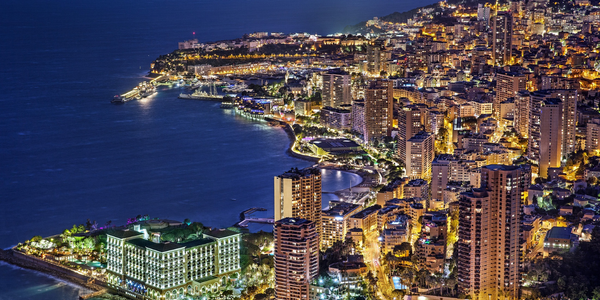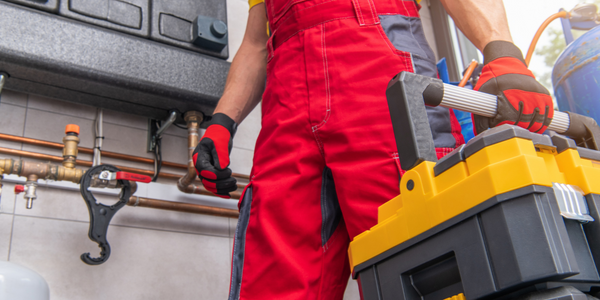Т░┤тіАу«Ауљє

- У«ЙтцЄСИјТю║Тб░
- уЪ┐СИџ
- у╗┤Тіц
- У┤ежЄЈС┐ЮУ»Ђ
жбёУ«Атѕ░ 2025 т╣┤№╝їТ░┤У┤еуЏЉТхІтИѓтю║С╗итђ╝т░єУЙЙтѕ░ 46.9 С║┐уЙјтЁЃ№╝ї2016 т╣┤УЄ│ 2025 т╣┤жЌ┤уџётцЇтљѕт╣┤тбъжЋ┐ујЄСИ║ 4.54%сђѓ
Т░┤У┤етњїТ│ёТ╝ЈуЏЉТхІуџётЋєСИџС╗итђ╝Тў»С╗ђС╣ѕ№╝Ъ
- жђџУ┐ЄУіѓуюЂТѕљТюгУјитЙЌжбЮтцќТћХтЁЦ№╝џжђџУ┐Єт«ъТЌХуЏЉТјДТЅђТюЅТЊЇСйю№╝ѕтїЁТІгТ│ёТ╝ЈсђЂтјІтіЏС╝аТёЪтЎетњїуЅЕУЂћуйЉУй»С╗ХтѕєТъљ№╝ЅтЈ»С╗ЦжЎЇСйјТ░┤у«АуљєТѕљТюг№╝їС╗јУђїС╝ўтїќУхёС║ДтѕЕућеујЄсђЂТћ╣У┐ЏУ┐љУљЦТхЂуеІсђЂУіѓуюЂУЃйТ║љТѕљТюгсђЂТюђтцДжЎљт║дтю░тЄЈт░ЉС║║тиЦт╣▓жбёсђЂТЏ┤Сйјуџёу╗┤ТіцТѕљТюгтњїТЏ┤СйјуџётЪ║уАђУ«ЙТќйТѕљТюг
- ТЈљжФўућЪС║ДтіЏ№╝џуЅЕУЂћуйЉтЁЂУ«Ит«ъТЌХТјДтѕХТЏ┤ТўјТЎ║уџёСИџтіАтє│уГќсђЂжЎЇСйјУ┐љУљЦТѕљТюгсђЂС╝ўтїќТхЂуеІтњїУхёТ║љС╗ЦтЈіу╝ЕуЪГТюЇтіАТЌХжЌ┤
- ТЈљжФўТЋѕујЄ№╝џТ░┤у«АуљєтЁгтЈИтњїтЇЈС╝џтЈ»С╗ЦСй┐ућет«ъТЌХУ┐љУљЦТјДтѕХТЮЦтЂџтЄ║ТЏ┤ТўјТЎ║уџёСИџтіАтє│уГќт╣ХжЎЇСйјУ┐љУљЦТѕљТюг
- Тћ╣У┐ЏуџёТЊЇСйюУ┐ЄуеІТјДтѕХтњїуЏЉТјД
- С╝ўтїќтњїжђЈТўјуџёУхёС║ДтѕЕуће№╝џТЎ║УЃйућхУАесђЂС╝аТёЪтЎетњїУ┐ъТјЦТўЙуЮђТћ╣тќёТЅђТюЅУхёС║ДуџёУиЪУИф№╝їТЈљСЙЏт»╣СЙЏт║ћжЊЙуџёт«ъТЌХтЈ»УДЂТђД
- С╝ўтїќтњїжђЈТўјуџёУхёС║ДтѕЕуће№╝џжђџУ┐ЄСй┐ућеС╝аТёЪтЎетњїУ┐ъТјЦ№╝їТ░┤тіАтЁгтЈИТўЙуЮђТћ╣тќёС║єт»╣тЁХТЅђТюЅУхёС║ДуџёУиЪУИф№╝їУјитЙЌт»╣тЁХСЙЏт║ћжЊЙуџёт«ъТЌХтЈ»УДЂТђД
- ућеТ░┤у╗ЪУ«АтњїтѕєТъљуџёт«ъТЌХуЪЦУ»є№╝їС╗Цт«ъуј░ТЏ┤ТЎ║УЃйсђЂТЏ┤т┐ФжђЪуџётє│уГќ№╝џуЅЕУЂћуйЉтѕєТъљтЈ»С╗ЦТХѕжЎцТЋ░ТЇ«СИЇУДётѕЎТђД№╝їт╣ХТЈљСЙЏТюфУ«АУ┤╣ућеТ░┤у╗ЪУ«АТЋ░ТЇ«Тѕќтє│уГќУ┐ЄуеІСИГТЅђжюђуџёС╗╗СйЋуЏИтЁ│у╗ЪУ«АТЋ░ТЇ«уџёт«ъТЌХУДєтЏЙсђѓ
- жЎЇСйју╗┤ТіцТѕљТюг№╝їтљїТЌХТЈљжФўуйЉу╗юУ┐љУљЦуџёт«ЅтЁеТђДтњїтЈ»жЮаТђД№╝џУЃйтцЪт«џСйЇТЅђТюЅУхёС║Д№╝їУ┐ЏУАїт«ъТЌХуЏЉТјД№╝їТјДтѕХтњїУ┐љУАїтЁ│жћ«тЪ║уАђУ«ЙТќйтњїТю║тЎеуџёжбёжў▓ТђДу╗┤Тіц№╝їТ░┤тіАтЁгтЈИТўЙуЮђжЎЇСйју╗┤ТіцТѕљТюгт╣ХТюђтцДжЎљт║дтю░тЄЈт░ЉтЊЇт║ћТЌХжЌ┤сђѓ
СИ║С╗ђС╣ѕТ░┤у«Ауљєу│╗у╗ЪСИГуџёт«ъТЌХТЋ░ТЇ«тѕєТъљтЙѕжЄЇУдЂ№╝Ъ
тЪ║С║јуЅЕУЂћуйЉуџёТ░┤у«Ауљєу│╗у╗ЪтѕЕућет«ъТЌХТЋ░ТЇ«тѕєТъљуџётіЏжЄЈТЮЦ№╝џ
- ТюЅТЋѕтю░тЊЇт║ћтњїжЂ┐тЁЇу┤ДТђЦТЃЁтєх
- жЄЇТќ░УјитЙЌТћХтЁЦ
- жЎЇСйјУЃйТ║љТѕљТюг
- тЄЈт░Љу┤ДТђЦу╗┤С┐«ТЃЁтєх
-ТБђТхІтњїу«АуљєТ░┤тѕєТхЂтц▒
- жбёТхІТйютюеуџёу«АжЂЊТЋЁжџю
- у«АуљєТ░┤тјІ
- ТЏ┤тЦйтю░тѕєжЁЇу╗┤Тіцтњїу╗┤С┐«ТѕљТюг
ТАѕСЙІуаћуЕХ.





